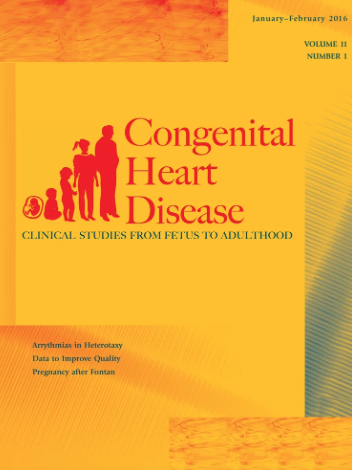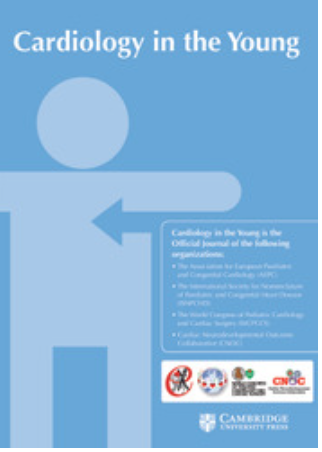Pubblications / CHDPP | Congenital Heart Disease in Pediatric Patient
abstract: We report a rare congenital heart disease characterized by multiple ventricular septal defects associated to anomalous systemic and pulmonary venous returns, marked apical myocardial hypertrophy of both ventricles and of right outflow, and hypoplastic mitral anulus. Multimodality imaging is mandatory to assess anatomical details.
ABSTRACT
We present the case of an infant admitted to our department for a rapid broad complex tachycardia and cardi- ovascular collapse. The patient was submitted to genetic testing because of a conduction defect at baseline ECG and family history of gene mutation. A new SCN5A gene mutation variant was found leading to diagnosis of sodium-channel dysfunction arrhythmia.
Link to complete pubblication: https://www.techscience.com/chd/online/detail/18816
Abstract
Anatomically corrected malposition of the great arteries is a rare CHD, involving alignment and position of the great arteries. We report an infant with situs solitus, atrioventricular discordance, and ventriculoarterial concordance with the aorta arising anteriorly and to the right of the pulmonary artery. A mutation of Nodal gene, implicated in the pathogenesis of human left–right patterning defects, was found.
Abstract
Anomalous right ventricle muscle bands and apical ventricular septal defect are two anomalies sometimes associated. We report a fetal diagnosis of a large apical ventricular septal defect, right intraventricular obstruction caused by anomalous muscle bands; consequently, the high right intraventricular pressure resulted in a right-to-left bulging of ventricular septum and moderate tricuspid regurgitation. Postnatal echocardiogram confirmed the fetal diagnosis and defined accurately the right ventricular anatomy through the three-dimensional echocardiographic assessment.
Abstract
We present a 1‐year‐old female infant case in natural history, affected by D‐transposition of the great arteries with multiple ventricular septal defects in dextroversion, left juxtaposition of atrial appendages, and persistent left superior caval vein draining into coronary sinus. This is anuncommon case, and its particularity is due to clinical and anatomical findings diagnosed late in a setting of a complex cardiac malformation.After the diagnosis, the patient underwent palliative arterial switch operation without complications.
ABSTRACT
Idiopathic Ventricular Tachycardia (IVT) in children requires a rapid and accurate diagnosis as well as appropriate
care. We herein describe a patient with an uncommon IVT and premature ventricular contractions arising from the
tricuspid annulus and evaluate the outcome of radiofrequency ablation site therapy in children.
A 15-year-old boy was admitted to the emergency department with a complaint of palpitation. The patient had a
history of ablation therapy for VT in the right ventricular outflow tract 3 years previously and recurrent episodes
of accelerated idioventricular rhythm or slow VT since then. The palpitation was not responsive to antiarrhythmic
drugs. Structural heart disease was excluded by normal echocardiography. Arrhythmogenic right ventricular dysplasia
and LV (Left Ventricular) non-compaction were excluded by cardiovascular magnetic resonance imaging. Given the
patient’s unresponsiveness to medical treatment, an electrophysiological study was performed, and the slow VT with
a tricuspid annular origin was ablated successfully.
Keywords: Ventricular Tachycardia; Right ventricular outflow tract; Ablation; Pediatric; ElectroCardiography
ABSTRACT
We describe a case management of 35 weeks gestational age of pregnant woman referred to our emergency room for
suspicious of premature ectopic beat. Our fetal echocardiogram showed normal heart anatomy, atrial flutter, fetal
suffering. Cesarean delivery was done quickly and newborn showed, enlarging of right heart chambers, mitral and
tricuspid valve insufficiency, fast supraventricular arrhythmia and adenosine ev was administrated for diagnosis. After
adenosine clear atrial flutter waves were seen with atrial rate greater than 500 bpm with variable atrio ventricular
conduction and successful therapy with amiodarone and synchronized cardioversion was performed.
Keywords: Fetal and neonatal atrial flutter; Amiodarone; Direct current cardioversion; Adenosine; Echocardiography
Read complete pubblications here









